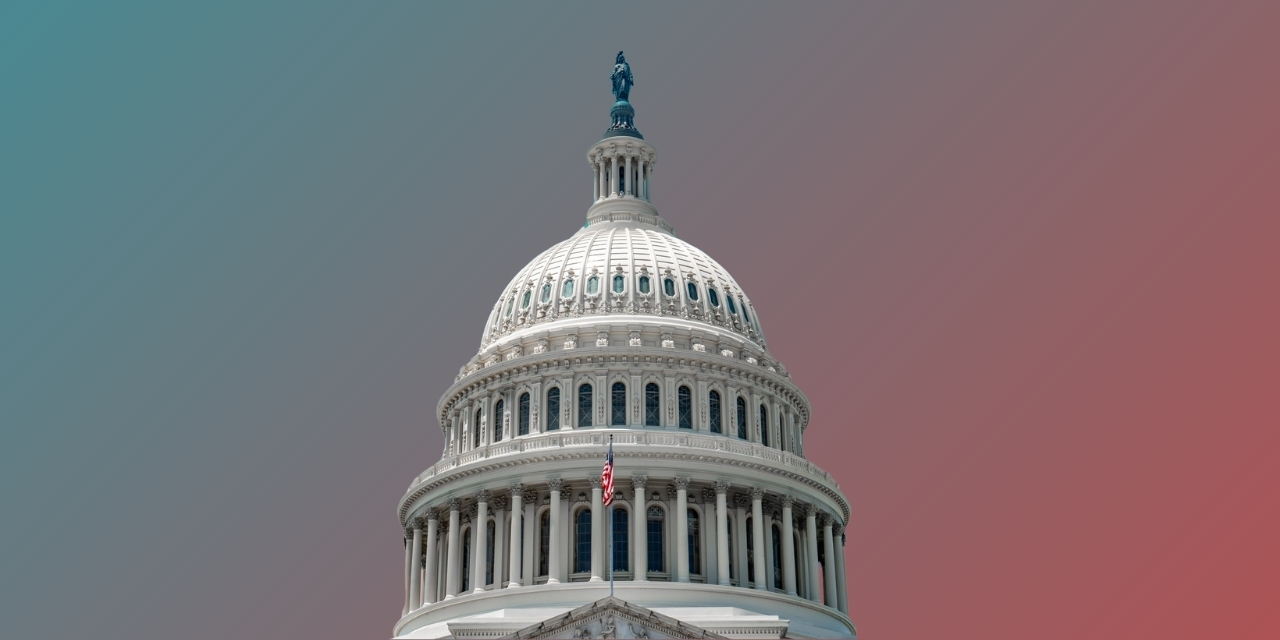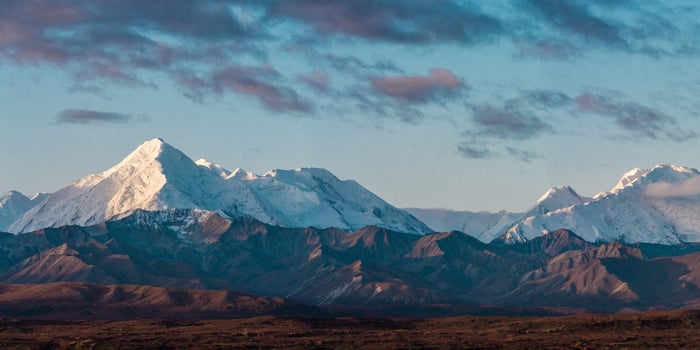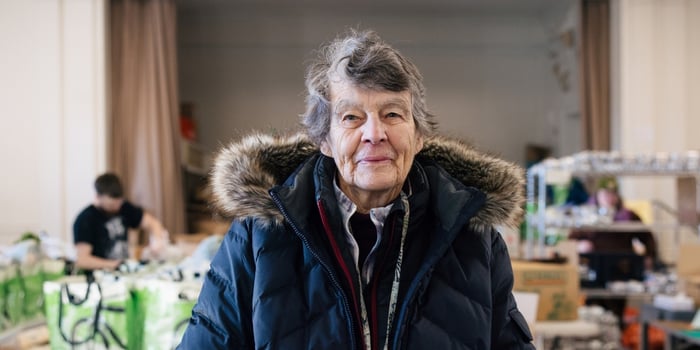How SNAP and Medicaid Cuts Could Impact Thousands in Alaska
SNAP • Hunger Awareness and Advocacy • 10 min read • Jun 18, 2025 5:36:57 PM • Written by: Rachael Miller

Who will be impacted by the multi-billion dollar SNAP and Medicaid cuts?
Seasonal workers in Alaska, including fishermen, restaurant servers, hotel staff, and seasonal tourism staff feed us, serve us, and welcome visitors from around the world. Yet these same Alaskans are among those at risk under proposed cuts to the SNAP and Medicaid, part of the federal budget reconciliation process in what’s being called the “Big, Beautiful Bill” (BBB).
What the “Big, Beautiful Bill” Means for Alaska SNAP Recipients
Currently, Congress is considering more than $1 trillion in proposed cuts to SNAP and Medicaid. Nearly 70,000 Alaskans rely on SNAP, and 1 in 3 use Medicaid. If these cuts go through, the ripple effects will be felt across every community.
These cuts could worsen food insecurity in Alaska, especially in rural and seasonal communities where access to steady income and affordable groceries is already limited.
Learn More About Medicaid in Alaska and Who Could Lose Coverage
- Medicaid in Alaska – Kaiser Family Foundation
Key facts on enrollment, coverage, and spending. - Who Uses Public Benefits in Alaska – CBPP
Interactive data on SNAP and Medicaid usage. - How Medicaid Cuts Could Affect All Alaskans – Alaska Public Media
Potential impacts on rural hospitals and private insurance holders.
Why SNAP Matters for Alaska’s Families and Economy
Food Bank of Alaska partners with the Division of Public Assistance (DPA) to help people apply for SNAP in Alaska. SNAP has helped lift tens of thousands out of poverty. It provides not just meals but stability.
It’s also a highly efficient program with real economic impact. In 2023 alone, SNAP generated more than $281 million in spending at 552 Alaska retailers, from major grocery stores to local farmers' markets.
Proposed Cuts to SNAP Shift Costs to the State of Alaska
The BBB proposes deep cuts to SNAP and shifts an unsustainable share of the program’s costs to states like Alaska. Under the bill, Alaska would be required to take on additional administrative expenses and, for the first time, cover up to 15 percent of direct food benefits. These costs are currently paid entirely by the federal government.
That’s $50 million per year that Alaska would need to find in the state budget. This is a conservative estimate based on data from the Division of Public Assistance.
New SNAP Work Requirements Could Hurt Seasonal Workers in Alaska
Furthermore – new red tape administrative requirements would make it harder for those with nontraditional work schedules. Fishing, tourism, service industry workers, whose incomes and schedule fluctuate drastically with our seasons are uniquely positioned to get hit, hard.
The proposed changes would require more adults to prove employment, including those up to age 64 and parents of children as young as 10. Exemptions for veterans, people experiencing homelessness, and former foster youth would be eliminated. The authority to waive work requirements in high-unemployment areas, including much of rural Alaska, would also be sharply limited.
This cost shift and increased administrative requirements come at the same time the bill eliminates SNAP-Ed, which funds free nutrition and cooking classes in rural communities, and changes how utility and internet costs are counted towards income - further penalizing those in remote regions where heating, groceries, and internet are already more expensive.
For a more in-depth look at national SNAP cuts and their projected impact, see Feeding America’s analysis.
Alaska’s Seasonal Workforce and SNAP Eligibility
Alaska Workforce Stats and SNAP Eligibility
Did you know? Alaska’s workforce is more likely than the national average to work only part of the year. In fact, 20 percent of Alaskan workers were employed for fewer than 38 weeks, compared to 14 percent nationwide.
Many Alaskans who rely on SNAP or Medicaid work in seasonal industries. These workers often don’t meet new federal employment requirements under the proposed bill.
Here’s How Key Industries Break Down
|
|
Fishing, Hunting, Trapping |
Service |
Tourism |
|
Uses SNAP or Medicaid/CHIP |
1 in 3 |
2 in 5 |
1 in 4 |
|
Seasonal work that would not meet new requirements |
1 in 2* |
1 in 3 |
1 in 3 |
*More than half of Alaskan Fishing and Hunting workers in 2023 (and in other recent years) were not employed in more than 13 weeks of the year, meaning they would likely have trouble meeting the SNAP requirement to document work for all but 3 of the last 36 months.
Why These Cuts Hurt All of Us
So, who looks after the people who take care of us and our visitors?
We all do. State budget impacts affect all of us. As Alaska works on solutions for affordable housing, childcare, and energy, we cannot leave our neighbors behind. A SNAP recipient can look like anyone. In 2023, 14 percent of Alaska veterans lived in a household that received SNAP benefits or health coverage through Medicaid or CHIP.
The Wrong Policy at the Wrong Time
Remember, 1 in 10 Alaskans use SNAP. This is the wrong policy at the wrong time for our state. Food banks and charitable programs cannot fill the $211 billion national gap these SNAP cuts would create. Already, 1 in 7 Alaskans and 1 in 5 children face food insecurity. If Congress passes this bill, that number will only grow.
How to Contact Congress About SNAP and Medicaid
Use your voice. It’s time to speak up and defend food assistance in Alaska.
- Call toll-free (800) 708-8229
Leave a message for your Congressmen and urge them to protect SNAP and Medicaid. If you get disconnected or hear dead air, try again. Phone lines are busy. - Email Senator Dan Sullivan
- Email Senator Lisa Murkowski
- Email Representative Nick Begich
Stay Informed and Take Action
- Join Food Bank of Alaska’s Advocacy Mailing List
Be the first to hear about policy updates and ways to speak up for food security - Read Our Latest Annual Report
See the real impact of community support and the growing need across Alaska. -
Learn More from the Alaska Food Policy Council
Dive deeper into the state of food security and local solutions happening now. - Learn More about SNAP and the Big Beautiful Bill
From the Senate Committee on Agriculture, Nutrition, & Forestry. - Share this post to help spread awareness about how SNAP and Medicaid cuts could impact Alaskans. The more voices we raise, the stronger our chances of protecting food assistance in our state.
More In the News
🔗 Alaska Beacon: Alaska becomes a focus of last-minute changes to big federal bill, as U.S. Senate starts debate
🔗 AFSCME: Alaska member makes long journey to tell lawmakers to protect lifesaving services
🔗 New York Times [Op-Ed]: Alaska cannot survive this bill
🔗 Alaska Public Media: How the "One Big Beautiful Bill" would affect food assistance and medicaid
🔗 Alaska Public Media:Advocates worry "big, beautiful" GOP bill would push Alaskans off medicaid
Tell Our Congressman
Don’t take food away from hardworking families in rural Alaska.

Rachael Miller
Chief Advocacy Officer at Food Bank of Alaska
Related Articles

Navigating SNAP
What does the “Big Beautiful Bill” mean for SNAP in Alaska?

CSFP (Commodity Supplemental Food Program)


